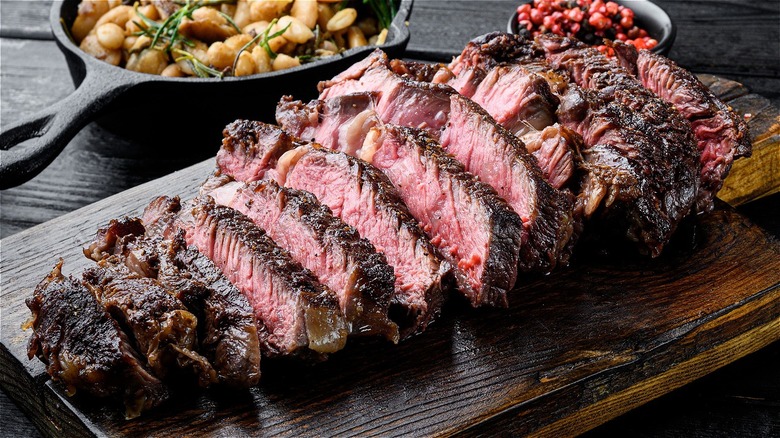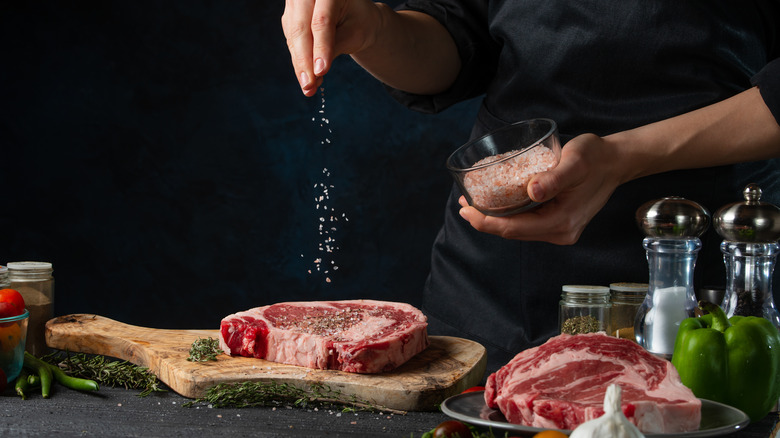What You Should Consider Before Dry Brining A Steak
Brining is a familiar technique used by cooks to infuse flavor and moisture into protein. The technique is often used with poultry like chicken and turkey, which can dry out during cooking, but the method can be used with other proteins, too.
There are two methods of brining, dry brining and wet brining. The more familiar version, wet brining, entails soaking a protein in liquid, often water, seasoned with salt as well as sugar, herbs, and spices. The brine penetrates the skin through osmosis to tenderize and flavor the meat, per Food Network. Depending on the type of protein, meat can be wet brined for as little as 10 minutes for fish to two days for a whole turkey.
To dry brine, meat is covered in salt and left uncovered in the refrigerator for hours to days, depending on the recipe. Salmon is commonly dry-brined in a mixture of salt, sugar, and herbs. After a few days, the brine is brushed off to reveal gravlax or lox, the familiar salty topping for New York bagels with cream cheese. Unlike wet brining, dry brining takes up little space in the refrigerator without the fear of spilling gallons of water.
While both brining methods can be used with steaks, depending on the desired doneness and temperature of your steak and which cut of meat you are cooking, dry brining is a particularly useful technique when you're working to achieve the perfect steak.
Brining results in steakhouse-caliber steaks
According to the Steak School by Stanbroke, achieving steakhouse-caliber steaks is technically impossible for home cooks without setting off the fire alarm — as many restaurants char-grill their steaks to achieve a delicious, enviable crust. While our ranges may not deliver the same heat as commercial versions, there are techniques home cooks can use to deliver a remarkable flavor.
Chef Zac Sykes recommends dry brining, especially for thick or tough cuts of steak. Sykes dries and heavily salts his beef in the refrigerator for up to a week, allowing air to circulate around the meat. He compares the results to dry aging, the lengthy and expensive process used by high-end steakhouses to intensify the flavor of beef, which demands a 40% to 100% premium, per Cook's Illustrated.
Dry brining draws out the moisture in the meat, which, along with high temperatures, is an essential step to achieve the Maillard reaction, the chemical process responsible for a golden brown crust. MasterClass suggests a dry brine of ½ teaspoon of Kosher salt per every pound of meat. Don't rush it: Less than an hour of dry brining will keep the salt on the surface of the meat, making your first bite salty, but not affecting the texture or flavor of the meat throughout. Before searing your steak in a cast-iron pan or on the grill, allow the seasoned meat to reach room temperature and pat the outside dry.

